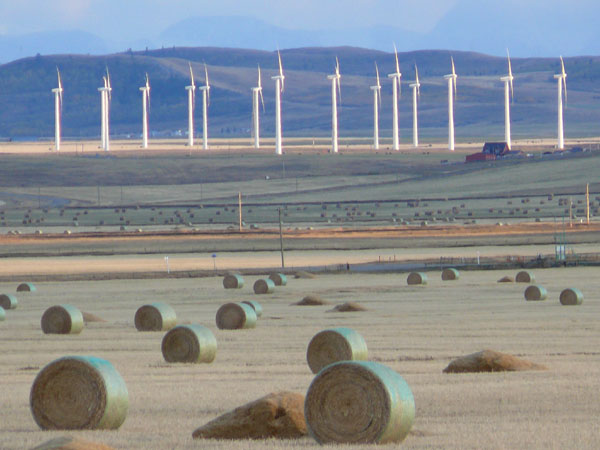Wind Turbines Kill Bats By Impersonating Trees

don’t stick around machines that have goliath turning sharpened pieces of steels. It’s a lesson bats have been moderate to learn, in light of the substantial quantities of their carcasses found underneath wind turbines. New feature footage proposes a few bats are pulled in to wind ranches on the grounds that they can’t distinguish turbines one from the other from trees. On the off chance that its actual, this may help us discover approaches to keep them more secure.
“I wish we knew beyond any doubt” how huge an issue wind homesteads stance to bats, says USGS research scientist Paul Cryan. Different analysts have evaluated that many thousands—or even countless bats are murdered consistently by wind turbines in the U.s. what’s more Canada.
Without a decent thought of the populace sizes of these bats, its difficult to put those numbers in viewpoint. Yet we do realize that bats have long lives and replicate gradually, which makes them helpless. “Bat populaces don’t react rapidly to quick misfortunes,” Cryan says. What’s more a few types of bats appear to kick the bucket at turbines more frequently than others, so the risk may not be equally spread out.
The most secure arrangement, Cryan says, is to discover methods for ceasing bat passings as quickly as time permits: “We may have the advantage of time and we may not.”

The bats that appear to be destined to bite the dust in wind homestead run-ins are “tree bats,” species that perch in trees instead of holes. To discover how these bats are getting themselves killed, Cryan and his coauthors observed turbines at an Indiana wind office for three months in the mid year and fall.
They utilized warm observation cams and infrared feature to spot bats oblivious. Acoustic indicators listened for bat calls, while radar cleared the range to discover what number of creatures of various sorts were passing through.
The region around or more the turbines was intensely trafficked—radar located a couple of million creatures taking all things together, including fowls and creepy crawlies. The camcorders caught footage of just under a thousand bats. Specialists examined this feature proof for educates the bats’ conduct regarding why wind turbines were murdering them.
They saw that bats didn’t attempt to keep away from the turbines, and indeed appeared attracted to them. While radar grabbed heaps of flying creatures in the zone, the winged animals seldom drew close to the turbines. At the same time bats nearly approached the turbine posts, nacelles, and even the edges themselves.
They pigeon and swooped around the turbines and pursued one another through them. Some would use a few minutes approaching and re-approaching a turbine, as though they couldn’t stay away.
The vast majority of the species appeared to be tree bats (focused around their calls, and also the scoop of dead bats analysts found beneath the turbines). These bats were more inclined to approach the turbines on a few nights than on others. At the point when the moon was obvious and more than half full, there was more bat action perhaps something about the light reflecting off the razor sharp edges pulled in their consideration.
bats were most dynamic when there was a tender wind, and they had a tendency to stay on the downwind side of the turbines.
This confirmation proposes that certain bats are pulled in to wind turbines on the grounds that they take after trees. They look dubiously like trees, for one thing, with a trunk-like shaft and extension ish sharpened pieces of steels. Likewise, bats can likely sense air momentums. The wind stream downwind of a turbine may feel to them like the flows on the protected sides of bluffs or trees—places where bats assemble in nature.
They may like hanging out in these spots on the grounds that there’s additional prey (bugs get blown downwind) and less predators, and flying is simpler.
On the off chance that tree bats can’t distinguish turbines one from the other from trees, they may swoop and assemble around them, as the features demonstrated, in light of the fact that they’re searching for prey. They might likewise be looking for mates, or simply a spot to perch for the night.
The bats can discover some of what they’re searching for at wind cultivates the creators note that bats off and on again turn up dead underneath turbines with their stomachs brimming with bugs. Be that as it may they won’t have much fortunes attempting to perch in a metal nacelle.
These discoveries aren’t widespread, Cryan stresses. The gathering just concentrated on a couple of turbines at one Indiana office. Anyway they do give indicates about how wind homesteads may quit offing such a variety of bats.
For one thing, bats in the study were less pulled in to turbines when the wind was blowing hard. This may be on the grounds that the turbulent air ebbs and flows from quick moving cutting edges didn’t feel as well known. Cryan says some wind offices are now raising their “cut-in” speed—the wind speed at which edges begin turning—to attempt and murder less bats.
On the off chance that turbines could likewise abstain from turning on all of a sudden in solid blasts of wind, they may abstain from slaughtering bats that had been sticking around and getting a charge out of the prior breeze.
There are likewise approaches to frighten away bats utilizing boisterous clamors or other jolts, Cryan says. On the off chance that wind homesteads focused on these endeavors at the space downwind of the turbines, they may have more achievement.
“We trust that our work moves others to investigate this secret, assemble confirmation, and check whether science can triumph,” Cryan says. So far the wind turbines have been triumphing over the bats, yet that doesn’t need to be the end of the story.
